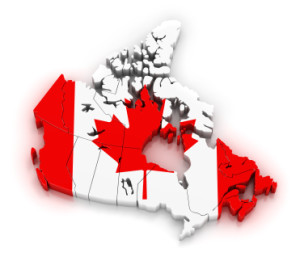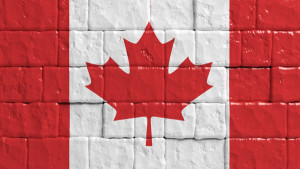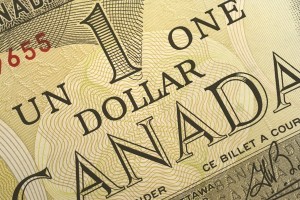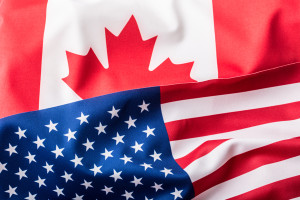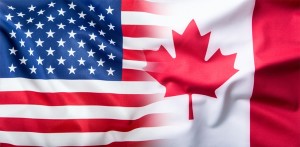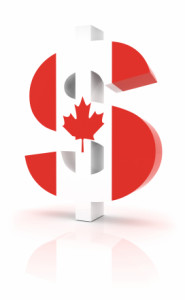The Canadian dollar is showing little movement in the Friday session, continuing the trend seen on Thursday. USD/CAD is trading slightly above the 1.29 line. On Thursday, Canadian GDP posted a small gain of 0.1%, matching the forecast. Canadian markets are closed for Canada Day, so there are no Canadian releases. In the US, today’s highlight is ISM Manufacturing PMI. The indicator is expected to remain unchanged at 51.3 points.
With the financial markets understandably focused on the stunning Brexit vote, the Federal Reserve and future monetary moves have shifted to the back-burner. That could change next week, as Fed Chair Janet Yellen will deliver a speech in Philadelphia. Will she provide any clues about a rate move? Yellen and her colleagues have sounded cautious about the US economy, and unless we see stronger employment and inflation numbers in the second half of 2016, the Fed may remain on the sidelines until 2017. Gone are the heady days of last December, when the Fed hiked rates and hinted that there was more to come in 2016, perhaps as many as four hikes. Bottom line? Traders shouldn’t count on an imminent rate hike to boost the US dollar; rather, the direction of the currency will largely be data-dependent – the Fed is unlikely to budge unless we see significantly improved employment and inflation numbers.
It’s been exactly a week since the historic referendum which saw the British electorate vote to exit the European Union after 40 years. Brexit The vote to leave the EU has caused deep instability in Europe and the UK and wiped out a staggering $3 trillion from global stock markets. As the dust has begun to settle, however, the financial markets have stabilized. The pound plunged as much as 11 percent in the aftermath of the vote but has stabilized in the past few days. Still, political leaders on both sides of the Channel will have to pick up the pieces and deal with the radical new landscape, which was unthinkable just a few months ago – that of a European Union without the UK. British politic have sought to calm the public and the markets, but the pound’s sharp drop on Thursday underscores that the situation is anything but normal. The country’s political picture is fluid, as the Conservatives are choosing a new leader, the Labor Party is in turmoil and elections may not be far away. On the financial front, the pound and the markets have taken a beating and London’s position as a world financial center has been shaken. The uncertainty is not going to disappear anytime soon, so traders can expect further volatility in the currency markets.
British Prime Minister Cameron was in the unenviable position of meeting with fuming European leaders at an EU Summit this week. Cameron asked for time to prepare Britain’s exit and wants to renew “productive” relations with Europe. However, the Europeans are in no mood for hugs and kisses on both cheeks, and the “divorce of the “century” between Britain and the EU could be rancorous and messy. German Chancellor Merkel said that the UK could not “cherry pick” and that a relationship with Europe entailed obligations and not just rights – in other words, the Europeans are rejecting “half membership”. As well, Europe wants Britain to exit as soon as possible, in order to minimize the uncertainty and instability caused by the Brexit vote. French President Hollande wasted no time going on the attack, saying that London should no longer remain a center for clearing euro trades. This market is worth trillions of euros in currency and derivative deals and such a move would be a severe blow to London’s financial sector. Already, the European Banking Authority has announced it is leaving London and moving to Paris or Frankfurt. In a strictly legal sense, Britain is still a member of the EU club, but politically, it is persona non grata (British EU Commissioner Jonathan Hill resigned shortly after the Brexit vote). The markets are allergic to uncertainty, so Britain’s unclear status within the EU will likely continue to weigh on the pound as well as risk currencies like the Canadian dollar.
USD/CAD Fundamentals
Thursday (June 30)
- 8:30 Canadian GDP. Estimate 0.1%. Actual 0.1%
Friday (July 1)
- 9:45 US Final Manufacturing PMI. Estimate 51.4
- 10:00 US ISM Manufacturing PMI. Estimate 51.3
- 10:00 US Construction Spending. Estimate 0.6%
- 10:00 US ISM Manufacturing Prices. Estimate 63.9
- All Day – US Total Vehicle Sales. Estimate 17.3M
* Key releases are in bold
*All release times are GMT
USD/CAD for Friday, July 1, 2016

USD/CAD July 1 at 9:00 GMT
Open: 1.2959 Low: 1.2925 High: 1.2975 Close: 1.2932
USD/CAD Technical
| S1 | S2 | S1 | R1 | R2 | R3 |
| 1.2562 | 1.2711 | 1.2830 | 1.2952 | 1.3048 | 1.3182 |
- USD/CAD was flat in the Asian session and has posted small losses in the European session
- 1.2830 is providing strong support
- 1.2952 was tested in support earlier and is a weak line
Further levels in both directions:
- Below: 1.2830, 1.2711 and 1.2562
- Above: 1.2952, 1.3048 and 1.3182
- Current range: 1.2952 to 1.3048
OANDA’s Open Positions Ratio
USD/CAD ratio is showing long positions with a majority (55%), indicative of trader bias towards USD/CAD breaking out and gaining ground.
This article is for general information purposes only. It is not investment advice or a solution to buy or sell securities. Opinions are the authors; not necessarily that of OANDA Corporation or any of its affiliates, subsidiaries, officers or directors. Leveraged trading is high risk and not suitable for all. You could lose all of your deposited funds.

